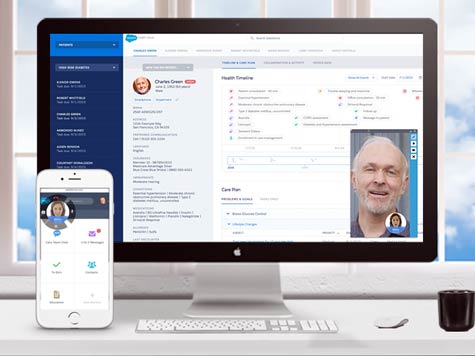Now that more people than ever have health insurance, there’s a lot more focus these days on trying to drive costs out of the health care system. A cornerstone of that effort is keeping people out of the hospital in the first place.
Salesforce last year unfurled Salesforce Health Cloud, which takes all the concepts Salesforce employs in its customer relationship management (CRM) application and applies them to patient management. Today Salesforce extended the capabilities of that software-as-a-service (SaaS) application by adding support for two-way video.
Joshua Newman, M.D., general manager for Salesforce Health care and Life Sciences, says rather than trying to transform complex electronic medical record (EMR) systems into patient management systems, Salesforce is making the case for using software delivered as a service to track patient interactions. In effect, Salesforce Health Cloud is designed from the ground up to be a system of engagement. In contrast, EMRs are systems of record that were never really meant to be used to improve patient care.
Over time, Newman says, Salesforce envisions the broad ecosystem of insurers, manufacturers and service providers that make up the health care industry being able to better collaborate via the Salesforce Health care Cloud. In addition, Newman says that via the open application programming interfaces (APIs) that Salesforce publishes it becomes much simpler for third-party developers to create innovative health care applications.
In the meantime, Newman says it is clear that most health care organizations need a better way to engage patients with an eye toward providing much better service inside and outside of a hospital setting.
“It’s really about keeping people out of the ER as much as possible,” says Newman.
What ultimate impact SaaS applications might have on reducing health care costs remains to be seen. But the one thing that is apparent to almost everyone involved is that most of the processes employed in health care systems around the world are fundamentally inefficient. One of the major reasons this is the case is because health care providers built IT systems to track individual transactions, as opposed to patient interactions involving multiple doctors and specialists over an extended period of time. There will always be a requirement to keep track of transactions. But using those transaction systems to improve the quality of health care being provided may not be the best place to start.




